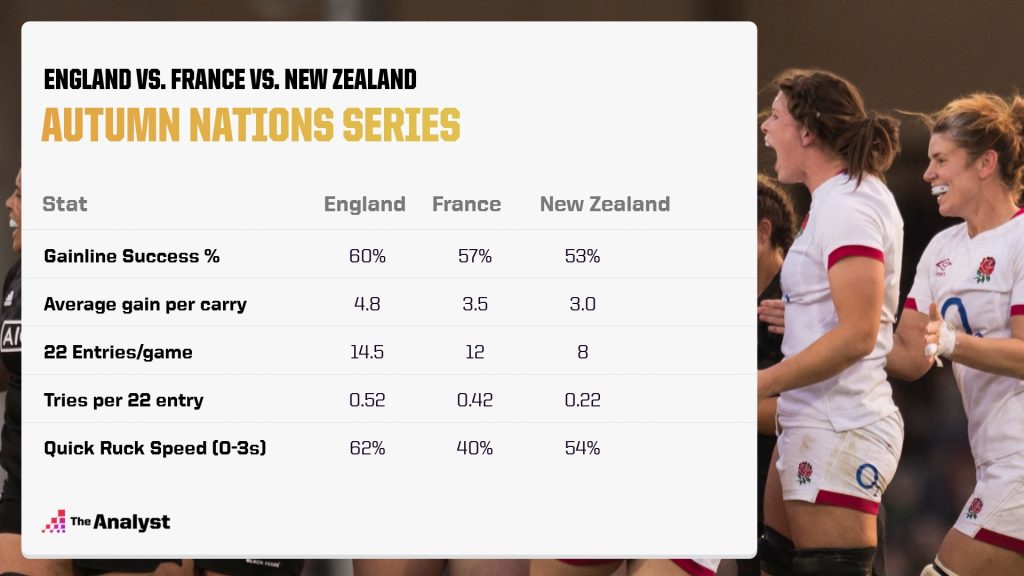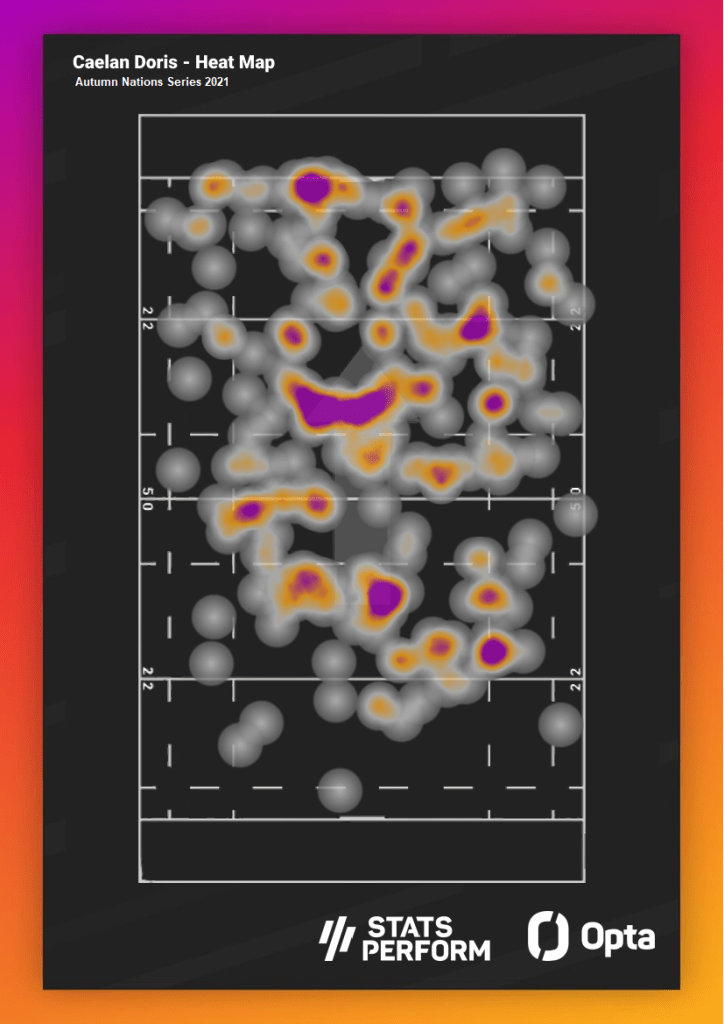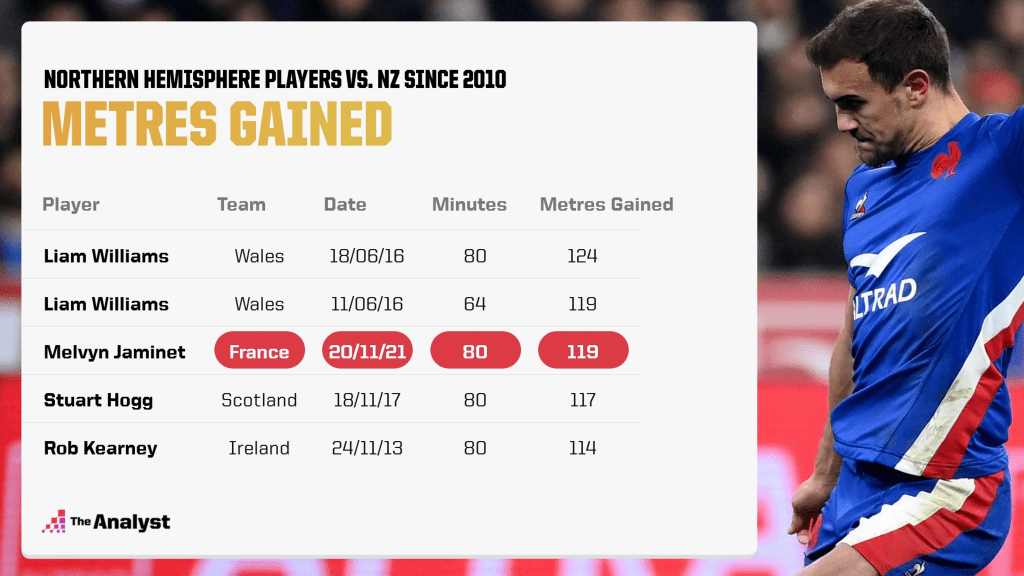Welcome to The Breakdown, our weekly rugby blog for the 2021-22 Autumn Internationals, where we use Opta’s official rugby data to dissect what just happened and why.
With the Autumn Nations Series over we can reflect on what has been a dramatic and unpredictable set of fixtures for both the men and women. Who were the movers and shakers and what has the last month of international rugby done to the world order? The 2022 Six Nations starts in just 10 weeks and with the Women’s Rugby World Cup on the horizon too, which coaching teams will be enjoying their Christmas lunch with the fewest worries?
Women’s Autumn Internationals
On the women’s side of things, there has been a real change in momentum. The once-invincible Black Ferns are suddenly vulnerable. Having not played since 2019, a tour of Europe looked set to be just the tonic for New Zealand, but four chastening defeats at the hands of England and France will have provided a stark wake-up call ahead of RWC 2022. Four consecutive defeats marks their worst ever run and in that streak were their four biggest ever losses. They have time to turn it around still but it will be a frantic push to catch up with the European heavyweights.
The Red Roses are firmly the leading side in the world at the moment, as their 18-match winning run demonstrates. 239 points scored across four games and just 39 conceded proves their dominance, but they won’t rest on their laurels as they head to the Six Nations looking to build more confidence and give more exposure to the depth of their squad.
Les Bleues have also cemented themselves as real challengers. Since July 2019 England are the only side they have lost to, and a fourth consecutive win over New Zealand last weekend will fill them with confidence ahead of 2022.
Across New Zealand’s four games against England and France it was England who set the pace, with quick ball, strong carries and clinical finishing when in the opposition 22. Leading in these key metrics is a sure-fire sign of success and the scoreboard reflected this dominance.

Men’s Autumn Internationals
The woes for New Zealand continued on the men’s side, with defeats to Ireland and France marking their worst ever Northern Hemisphere tour and ramping up the pressure on ‘new’ boss Ian Foster.
On the flip side, Ireland and France went through the ANS unbeaten along with England, and that trio will be firm favourites heading into the 2022 Six Nations. Ireland look the most established of the three, but both France and England have a strong core of fearless young players making a name for themselves. Here we pick out a few of the names that stole the headlines and look set to stay on the international scene for years to come.
England
Eddie Jones took a fairly brutal approach to his squad selection this autumn and a number of experienced players were cast aside as the Australian coach sets his sights on the next World Cup cycle. All three of their matches saw him tinker with the setup, sometimes enforced by injury or COVID and sometimes for the sake of experiment. Beyond the undoubted emergence of Marcus Smith as a new superstar, two other fresh faces to make an impact came in crucial positions in the backs at 9 and 15.
Freddie Steward
Since Mike Brown’s last game for England back in 2018, England have generally gone to Elliot Daly as their preferred option at the back, starting 31 times in the 15 shirt in that time (Anthony Watson 3, George Furbank 3, Max Malins 1). Daly however has been out injured since the Lions tour and Freddie Steward has taken his opportunity with both hands, literally. Having made waves in his brief time in the Premiership with Leicester Tigers, he was thrown in the deep end by Eddie Jones and already looks an assured prospect for the future, raising the question if Daly will make it back in the starting XV when healthy.
Most Catch Attempts – Autumn Matches:
| Player | Team | Minutes | Attempts | Catches | Catch % |
|---|---|---|---|---|---|
| Emiliano Boffelli | Argentina | 240 | 22 | 19 | 86% |
| Melvyn Jaminet | France | 212 | 22 | 19 | 86% |
| Jordie Barrett | New Zealand | 254 | 21 | 20 | 95% |
| Freddie Steward | England | 240 | 20 | 18 | 90% |
| Francois Steyn | South Africa | 113 | 16 | 15 | 94% |
| Kurtley Beale | Australia | 164 | 16 | 14 | 88% |
| Hugo Keenan | Ireland | 210 | 16 | 14 | 88% |
Raffie Quirke
Ben Youngs has been one of England’s most reliable players over the last 10 years, but all good things must come to an end. Even though the 100-cap legend might still have a few more years in the tank, Jones will be eager to bring through the next generation. Luckily for him he is not short of options, with Jack van Poortvliet, Harry Randall, Alex Mitchell and Raffie Quirke all in the mix. The latter of this selection, Quirke, has been cheekily nicknamed Raf de Quirke, in reference to his tutelage under Sale Sharks teammate Faf de Klerk. His experience with such a world-class scrum-half has clearly done him no harm at all and although injury prevented them going head to head when England met South Africa, Quirke definitely has the bragging rights after scoring what turned out to be the decisive try at Twickenham on his debut.
Ireland
Before the autumn, there may have been one or two question marks over Ireland’s development under Andy Farrell, but in the last month it feels like there is now a greater level of clarity in the Irish gameplan. November saw a decline in the box kicking tactics and a rise in slick passing and offloading – their win against the All Blacks showcasing 80 minutes of accurate passing and ball handling that perhaps surpassed the skill levels shown in any match during the Joe Schmidt era. There weren’t any wholesale changes to the Ireland squad during the ANS – with the Argentina game seeing the most experimentation – but a number of players put their hands up and arguably made themselves undroppable going into the Six Nations, including some of the younger members of the squad.
Caelan Doris
Caelan Doris came into the Autumn Nations Series well known to many Irish rugby fans, but it felt like over the last month he really announced himself on the international stage. Being named Player of the Match in a win against the All Blacks will do that. It wasn’t just against the All Blacks he shone though, also putting in huge shifts against Japan and Argentina and playing the full 80 minutes in all three games – one of just three players not to miss a minute for Andy Farrell’s side (alongside Ringrose and Lowe).
The 23-year-old was the top ball carrier of any player in the Autumn Nations Series, running with the ball on 36 occasions. He wasn’t afraid to do the dirty work too – his 99 ruck hits were the joint-most of any player, alongside Welsh flanker Taine Basham, who played a full 80 minutes more than Doris.

Ronan Kelleher
Ronan Kelleher also had a strong autumn for Ireland and – having made his debut at the beginning of 2020 – now looks to have made the #2 jersey his own. He had been wrestling with Rob Herring for the starting spot, with the Ulsterman often getting the nod for his strength at the set-piece.
However, Kelleher showed his improvement at the lineout, particularly in his games against New Zealand (9/10) and Argentina (5/5) where he found a teammate with all but one of his 15 throws. His real strength though is in his dynamic carrying. In the victory over the All Blacks he carried 14 times, only Jack Conan (15) ran with the ball more, while he also crashed his way over the try line for an important five-pointer. Defensively he was impressive too, missing just one tackle during the Autumn Nations Series and making 10/10 in his last game against Argentina. Few would bet against Kelleher going on to win 50+ caps as Ireland’s starting hooker, although he will be wary of fellow Leinsterman Dan Sheehan breathing down his neck – another young hooker who had an impressive autumn.
France
Over the summer France endured a heart-breaking trip to Australia, as last-minute penalty goals by Noah Lolesio in the first and third Tests denied the tourists a memorable series win. This autumn however they have regrouped marvellously, galvanised by those losses to beat Argentina and Georgia before rounding things off with a first win against the All Blacks since 2009. Youth has been at the centre of Les Bleus’ renaissance in recent years. Antoine Dupont is undeniably the star of the show but the support cast of Romain Ntamack, Matthieu Jalibert and Damian Penaud in the backs and Demba Bamba, Cameron Woki and Gregory Aldritt in the forwards has established a formidable core. And there is still more to come…
Melvyn Jaminet
At only 22 Melvyn Jaminet is another young full-back who already looks super comfortable at the top table. The Perpignan starlet made his debut in France’s thrilling tour of Australia in the summer, playing the full 80 minutes in each match and scoring 41 points in the process, landing 15 out of 16 shots at goal. That accuracy off the tee has continued through this autumn. In fact, he is yet to miss a conversion for Les Bleus (13/13) and has an overall accuracy rate of 92%. An average gain of 76 metres per 80 minutes with ball in hand, which included a mazy 119 against New Zealand this weekend, all point to someone who will be a key player for France for years to come.

Peato Mauvaka
Peato Mauvaka made his debut for France back in August 2019, but it wasn’t until November 2020 that he made his first start for Les Bleus. This autumn however he really made his formal introductions to the rugby world, scoring five tries in just 126 minutes of action across his side’s three ANS fixtures, including a brace against the formidable All Blacks this weekend. He could retire now and be a legend in folklore but with his talent, we imagine he will be hanging around a bit longer. A strong ball carrier, lethal at the back of maul, a powerful tackler and with a solid throwing arm, he might be the bedrock that France build their scrum around for years to come.
Enjoy this? Subscribe to our mailing list to receive exclusive weekly content.
Banner design from Matt Sisneros.
